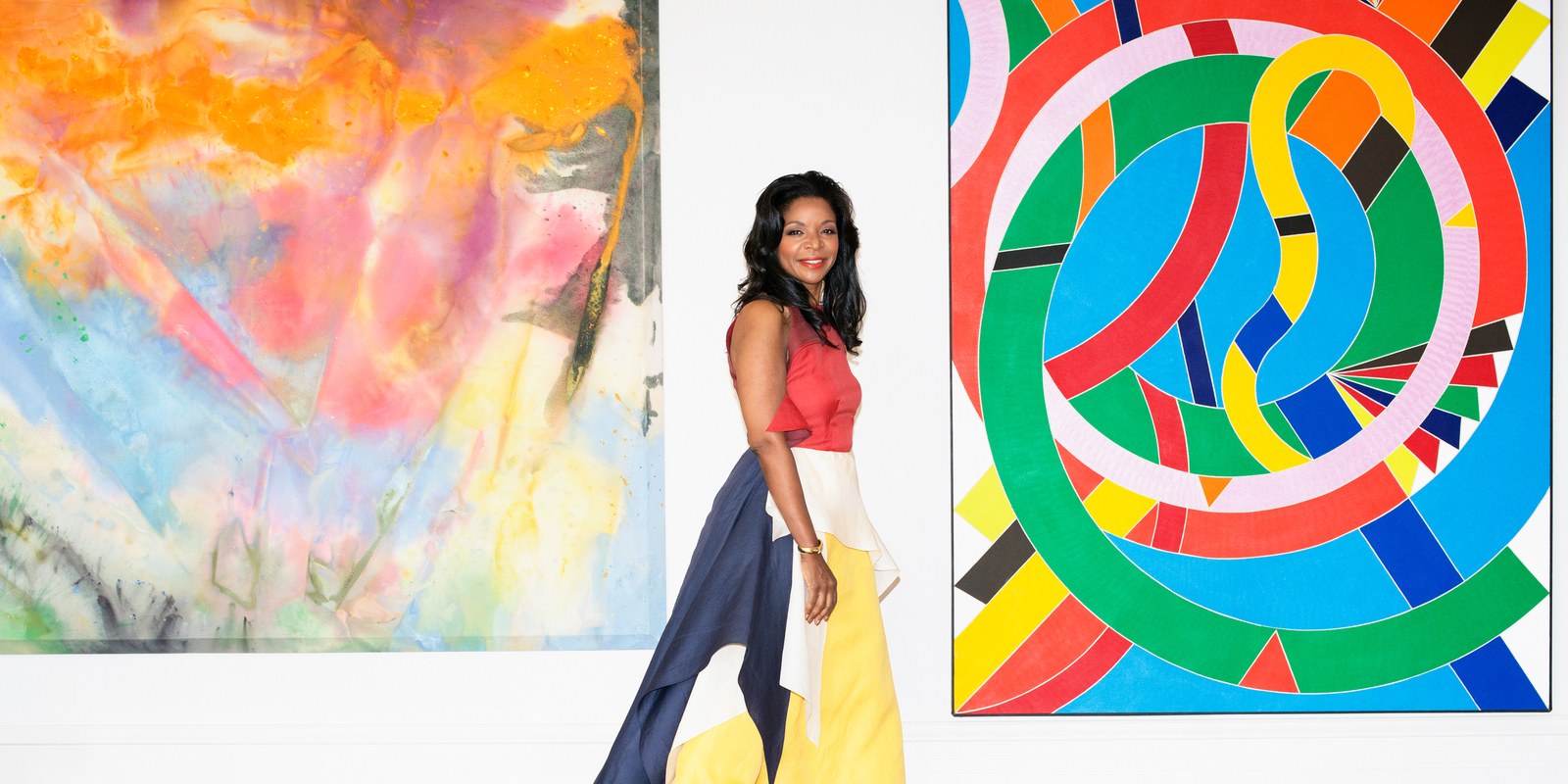“I used to say that this house is full of artists you’ve never heard of,” Pamela Joyner tells me on an unusually fine summer morning in Sonoma, California, where she and her husband, Fred Giuffrida, spend their weekends. “Now I say that this is a house full of artists you haven’t heard of until recently.”
San Francisco’s bridges and towers form the distant particles of a spectacular view across Chardonnay and Pinot Noir vineyards. Until the 1970s, this serene hilltop was home to a nudist colony, and Joyner insists that the area retains much of its old hippie spirit, particularly when measured against its more precious neighbor Napa. The house, she says, was meant to be “decompression-focused, not art-focused,” but inevitably, art seeped into every crevice. The works on display include a major Mark Bradford originally destined for a white wall in the couple’s San Francisco home, only it wouldn’t fit through the door; a row of porcelain “rags” by the Cuban artist Juana Valdes, who in this piece imbued bone china, valued for its whiteness, with a range of skin tones; and an enormous ribbon of woven wood by Leonardo Drew that, Joyner acknowledges with her easy laughter, certainly competes with the window treatments.
“I’ve never been the type to decorate to accommodate the art,” she says, removing a sun hat the size of an inner tube and grabbing her first Diet Snapple of the day. “I love gold and big, old-fashioned drapes and dishes and crystal and Persian rugs.” But Joyner doesn’t do frivolous very convincingly. She takes a seat in the living room beneath one of Sam Gilliam’s iconic dripped-and-draped canvases from the 1960s. “Now, Sam was born in Tupelo, Mississippi, in 1933. My mother was also born in Mississippi in 1933, so I think I understand what he was dealing with. When Sam took abstraction off the stretcher, he had to know that it was a breakthrough moment. To me, this work is an absolute act of subversion, a revolutionary act.”
Joyner has a thing for revolutionary acts. Indeed, it would not be a stretch to call the Joyner-Giuffrida collection an uprising in its own right. “It’s a collection with a mission,” she says of this prodigious trove of mainly paintings, largely abstract, exclusively by artists of African descent from the postwar period to the present. “Our goal is ambitious. We want to reframe art history by introducing artists into the broader canon who have not necessarily been included but deserve to be.”
Such a mission requires not only collecting but lending and donating works and stewarding artists’ careers. September saw the publication of Four Generations: The Joyner-Giuffrida Collection of Abstract Art, a catalog of unusual scholarly rigor that testifies to the broad, international, and multi-institutional collaboration among curators and historians, artists, dealers, and other collectors whom Joyner has marshaled on her artists’ behalf. The zeitgeist is very much on her side: A retrospective of the African-American figurative painter Kerry James Marshall arrives at New York’s Met Breuer this month, and next summer, London’s Tate Modern will mount a major exhibition on the shifting definition of “black art” in the United States in the past century. In the fall of 2017, a touring exhibition of works from the Joyner-Giuffrida collection will debut in New Orleans.
Read the entire article on W Magazine.

